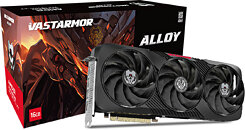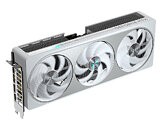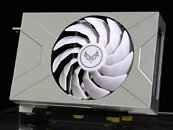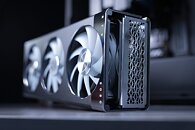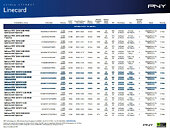Vastarmor Expands Radeon RX 9070 XT Range with New "Alloy" Model
Vastarmor—a Chinese manufacturer—was introduced as an important board partner during AMD's special Radeon 9070 Series event. Despite having limited reach outside of its home base, the fairly young brand's custom designs have gained press traction around the globe. TechPowerUp covered Vastarmor's introduction of new Super Alloy series Radeon RX 9070 XT and RX 9070 models back in late February. The triple-fan ARGB-lit flagship model was positioned in good (rival) company, thanks to a maximum 3.1 GHz boost capability. As reported by VideoCardz, Vastarmor has added another custom Radeon RX 9070 XT option to its RDNA 4 product portfolio. A freshly-published product page has outlined specifications for the brand's new (non-Super) Alloy SKU.
Outside of Vastarmor's dedicated listing, a quick web search of the model's identifier code—AH-9070XT16TC1BR7N—reveals BIOS information, and little else. The Radeon RX 9070 XT Alloy seems to be a straightforward spin-off of its fancier sibling, albeit sans ARGB lighting zones. This barebone design sports non-transparent black fans, but preserves the flagship card's triple 8-pin power connector configuration. Vastarmor has downgraded its non-Super model's boost clock to a mere 3010 MHz (instead of 3100 MHz)—as configured on rival cards: ASUS PRIME RX 9070 XT OC, PowerColor Hellhound RX 9070 XT, and Sapphire PURE RX 9070 XT. Curiously, a white Alloy option is not present on Vastarmor's website—their current-gen Super Alloy range launched with pale alternatives.
Outside of Vastarmor's dedicated listing, a quick web search of the model's identifier code—AH-9070XT16TC1BR7N—reveals BIOS information, and little else. The Radeon RX 9070 XT Alloy seems to be a straightforward spin-off of its fancier sibling, albeit sans ARGB lighting zones. This barebone design sports non-transparent black fans, but preserves the flagship card's triple 8-pin power connector configuration. Vastarmor has downgraded its non-Super model's boost clock to a mere 3010 MHz (instead of 3100 MHz)—as configured on rival cards: ASUS PRIME RX 9070 XT OC, PowerColor Hellhound RX 9070 XT, and Sapphire PURE RX 9070 XT. Curiously, a white Alloy option is not present on Vastarmor's website—their current-gen Super Alloy range launched with pale alternatives.



